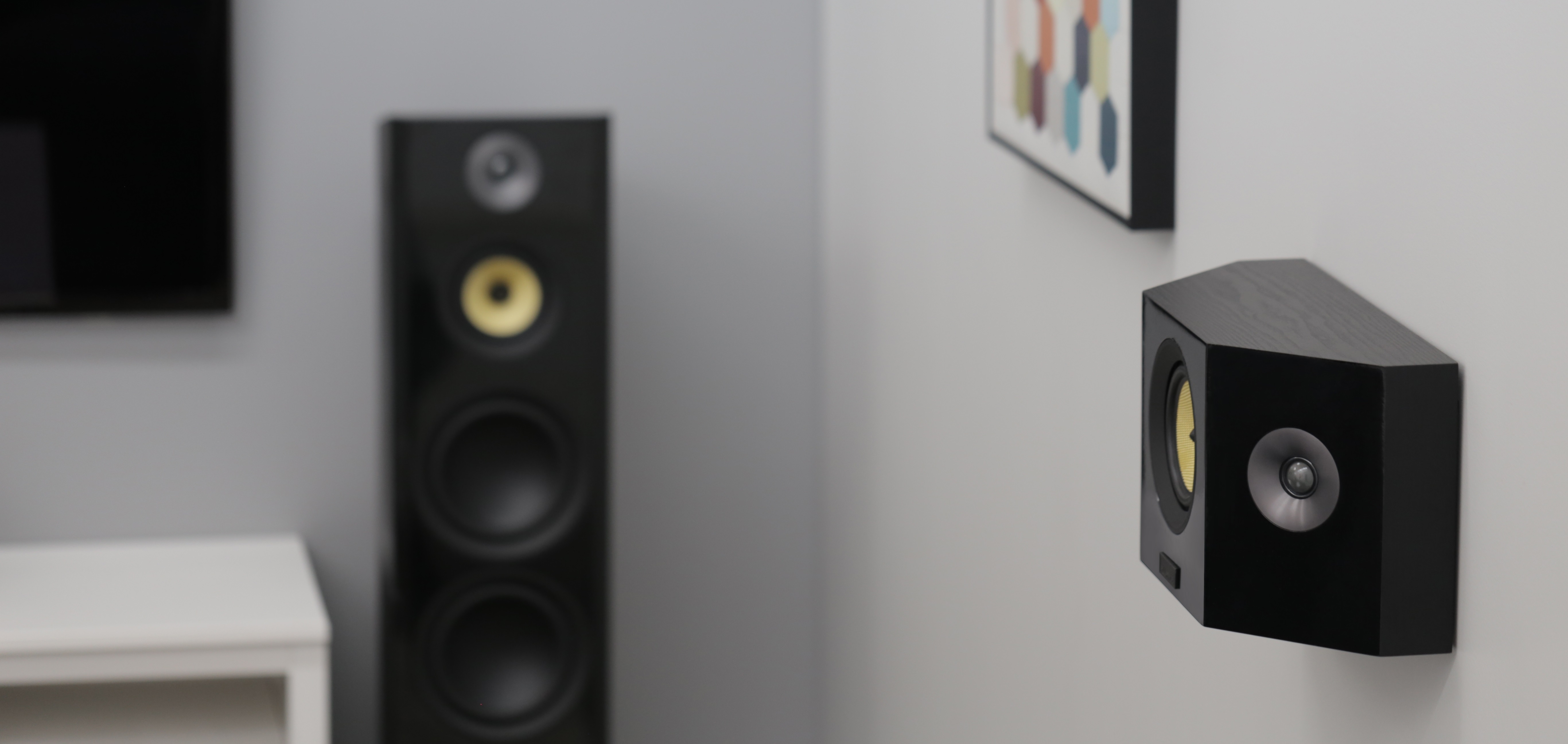As audio enthusiasts, many of us have a personal quest for the perfect sound in our home. Choosing the right speakers that fit our individual environments, budgets, and space requirements can be a challenge. You can even add décor and the (as some call it) “wife acceptance” factor as a potential influence in your choice of speakers.
Thus, you not only have many brands to choose from, but different form factors of speakers that each have their own unique qualities and pros and cons in different spaces. Loudspeakers come in three major types: floor-standing, bookshelf and bipolar. Within these categories, however, quite a lot of variation exists. To get the most out of your loudspeaker system’s quality sound, you’ll need to understand the dynamics of each.
Contents
Floorstanding Speakers
Floor-standing speakers are a music-listening favorite, commonly preferred because of their adaptability and capacity for high frequencies. They don’t need to be placed on a stand or table, and they can house multiple speaker drivers, which allows for a higher range of frequencies. For this reason, they’re commonly selected by music-lovers who favor song vocals and dialogue in middle ranges.
A few floor-standing speakers might include passive radiators—or front and rear ports. These ports extend to low-frequency outputs, giving the listener a full song spectrum. Some floor-standing speakers even include powered subwoofers which can further boost low-frequency performance.
Some audio enthusiasts swear by a 2 channel system and invest a majority of their budget in the floor-standing loudspeakers. For many, a proper set of floor-standing speakers will deliver a full range of sound frequencies to satisfy their listening needs. The benefit of just having a 2.0 or 2.1 system is the significant space savings by not needing additional speakers in the listening area. Likewise, you don’t have to worry about running wires to inconvenient areas.
Bookshelf Speakers
Bookshelf speakers are also incredibly popular. These speakers are a little more compact than floor-standing speakers, and they’re small enough to fit within a bookshelf, atop a desk or even as part of a television system setup.
Normally, bookshelf speakers are designed in a “box” shape. Because of their small size, they might have a superior low-frequency response. This said, movie and music-lovers who want a further range might want to pair them with a subwoofer to include those low-bass frequencies. Typically, bookshelf speakers are integrated into a home theater surround sound setup which already has a high-powered subwoofer. For more compact systems (instead of using floor-standing speakers) they can be used as fronts in addition to being used as rears, or surrounds.
Despite what their name suggests you would want to avoid setting up your bookshelf speakers within an actual bookshelf as the sound may resonate within the enclosed space. Better placement options include on an open media stand, mounted to the wall on proper mounts, or on speaker stands.
Some bookshelf speakers have built-in amplifiers allowing them to be stand alone music systems. This means you don’t need a separate amplifier or receiver, which makes for a compact and convenient speaker system. This is particularly useful for a simple turntable setup or if you wanted to enhance your TV audio with a simple pair of stereo speakers that take up little space, but will out-perform built-in speakers or soundbars.
Bipolar Speakers
Bipolar speakers radiate sound in two directions, equally. For this reason, they’re commonly purchased as part of a surround sound package. Bipolar surround sound occurs when a speaker system’s speaker drivers are situated on opposite sides of a speaker cabinet—creating omni-directional sound.
The design of bipolar speakers creates a wide sound field so you can’t tell where the sound is coming from. They are effective in filling in audio gaps between the front and back of the room. Their ideal placement is on the side of the room to create a rich soundscape. You can also put them in the back of the room to be used as rear surrounds.
Can These Speakers Work Together?
Absolutely! In fact, a lot of home theater builders utilize the different types of speakers for different channels. Floor-standing speakers often do the heavy lifting as the main left and right speakers. Bookshelf speakers are often used as surrounds or if space is a limitation, both passive and powered bookshelf speakers can make great front speakers.
As for crafting the perfect surround sound experience, few things compare to the wide-reaching bipolar speaker setup. Some opt for a 5-channel speaker system using bipolars as rears or surrounds. Others choose bookshelf speakers to act as their rear or surround speakers depending on the orientation of the room.
What is great about these component systems is you can build them up over time. You can start with a nice 2.1 channel system and slowly acquire a center channel, then rears and surrounds as you have more budget to work with. We do suggest that you stick to one speaker series as the speakers are often timbre-matched and designed to work together for the best sound.

XL8HTB Reference Surround Sound Home Theater 5.0 Channel Speaker System
Experience next-level sound performance with a skillfully matched five speaker surround sound system. Offering exquisite bass, rich and detailed midrange with captivating clarity for a dynamic acoustic experience.
Learn More